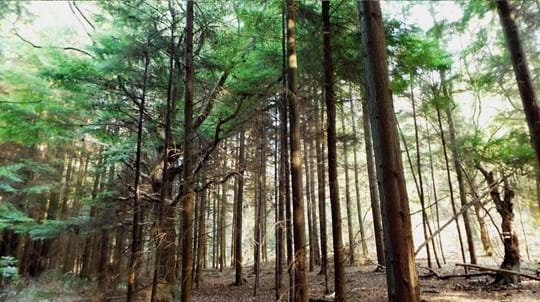
Protecting trees and woods
Advice and support
If you own or manage an ancient wood, we can guide you through the restoration process.
Ancient woodland is a rich diverse habitat that now covers just 2.5% of the UK. Much of what we have left is being damaged and once it’s gone, it can’t be replaced. But through restoration, we can stop the damage, encourage these habitats to recover and reverse years of decline.
We are at the forefront of championing restoration throughout the UK. As well as restoring our own sites, we are working with landowners and managers to restore privately-owned ancient woodland. Together, we’ve committed more than 38,000 hectares of damaged woodlands back into a process of recovery.
Almost 40% of the UK’s ancient woodland has been replanted with dense non-native trees, causing deep shade across the woodland floor. Non-native plants like rhododendron, Himalayan balsam and snowberry are also encroaching into our woodlands competing with native plants.
Restoration is the careful process of removing these threats. This enables natural regeneration of native trees and plants, and helps wildlife to thrive. Managed well, restoration can bring ancient woodland back from the brink and provide other benefits, such as income from timber.
Once sprawling wild woods full of wildlife and history, today our ancient woodland covers just 2% of the UK's land surface and half of this is damaged and in need of restoration. It's vital that we protect and restore any ancient woodland we have left to create rich, resilient and well-connected landscapes.
Timber shortages in the 20th century led to the replanting of at least 44% of ancient woodland sites with non-native conifers. Regular felling and restocking on these plantations has seriously damaged the last remaining ancient woodland features. Restoration will allow us to enhance these important surviving features, including veteran trees or deadwood and certain unusual wild flowers, native invertebrates and fungi.
The most important part of restoring ancient woodland is the slow correction of light levels by gradually thinning the canopy and allowing more light to reach the woodland floor. Rapid increases in light could shock any remaining woodland plants and encourage growth of brambles and bracken which can slow down the process. Carefully increasing the light levels allows surviving plants, trees and fungi to adapt slowly, meaning restoration is much more likely to be successful.
Our advice and support is based on evidence, research and years of experience working to restore ancient woodland on our own estate. It is accepted as best practice in the UK Forestry Standard produced by the Forestry Commission, and the UK Woodland Assurance Standard. Many conifer plantations which have been planted since the Second World War are reaching maturity and are due to be felled. If you own a plantation that you think might be on an ancient woodland site, get in touch for help and support to identify ancient woodland features and begin restoration.

Protecting trees and woods
If you own or manage an ancient wood, we can guide you through the restoration process.
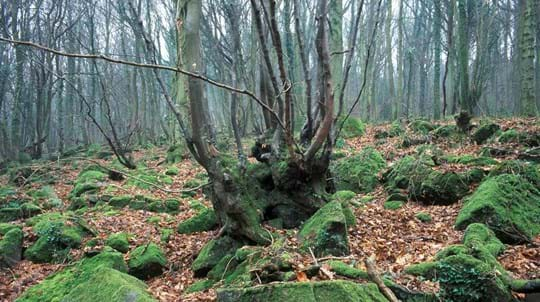
Protecting trees and woods
Think your wood could be ancient? Check our tips on what to look for on site and the historical records that could help.
Ancient woods have been around for centuries – long enough to develop into complex ecosystems. They are some of our most precious habitats, with incredible communities of plants, fungi, insects and other fauna.
They are home to lots of scarce species, including:
These habitats are also historical treasure troves. Full of archaeological and cultural features, they give us insight into the past.
Ancient woodland is priceless. If we don’t restore and protect what we have left, we’re at risk of losing it forever.

We've purchased Harrison Woodlands thanks to our generous supporters – but we still need your help.
Donate todayWithout restoration, many of these woods will degrade further or disappear altogether.

Credit: Amy Lewis / WTML
New tree diseases and insect pests are arriving in the UK each year, affecting tree health.
In many areas, high and increasing deer numbers prevent new saplings from establishing and can impact woodland ground flora. This hinders progress with restoration. Grey squirrels also have implications for restoration management.

Credit: Laura Shewring / WTML
Extensive clearfelling, drainage and soil damage can further threaten the survival of the fragile remnants of these ancient woodland ecosystems.
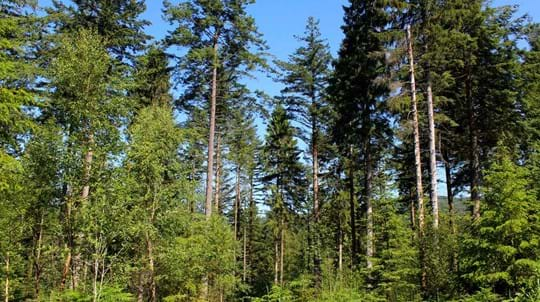
Protecting trees and woods
Discover how we restore and maximise the ecological integrity and resilience of these incredibly special places.
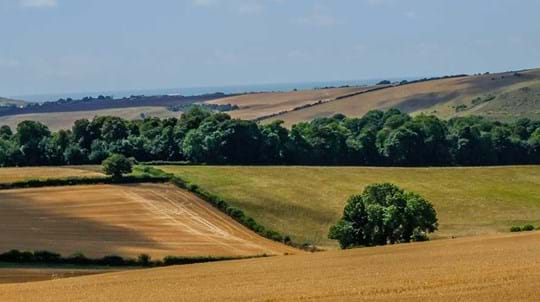
About us
Find out how we're creating bigger, richer, better, more resilient landscapes for nature and people.
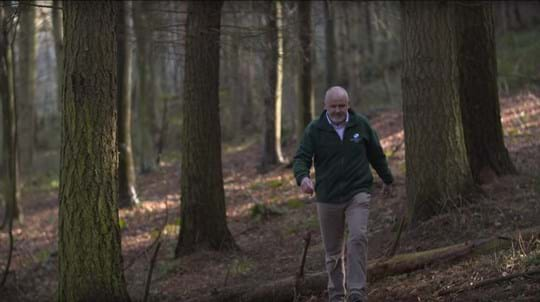
Video
00:06:58
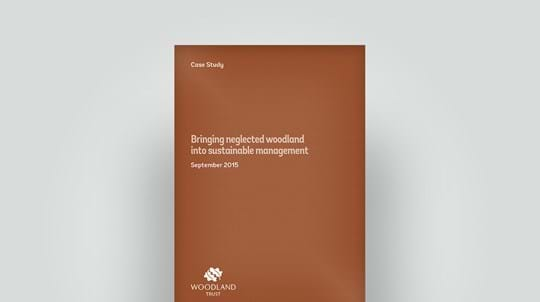
Case study
PDF (737 KB)
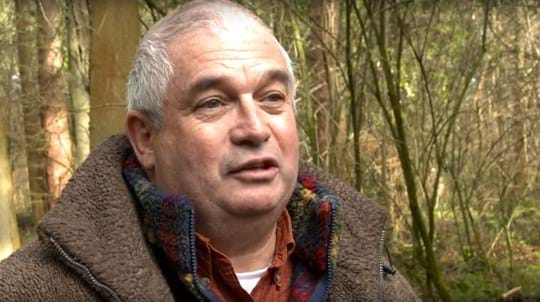
Video
00:05:09
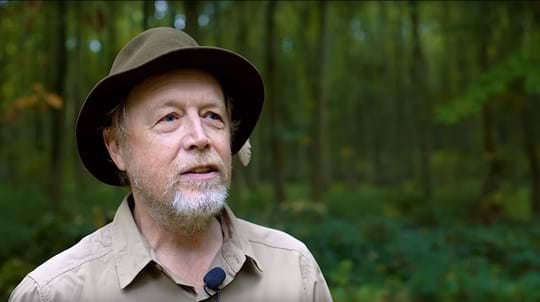
Video
00:04:07
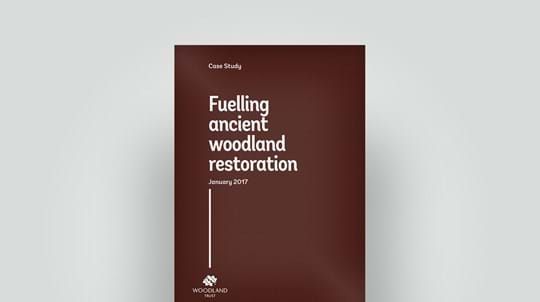
Case study
PDF (5.11 MB)
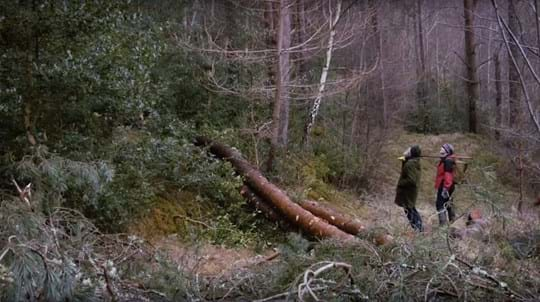
Video
00:03:37

Case study
PDF (2.21 MB)
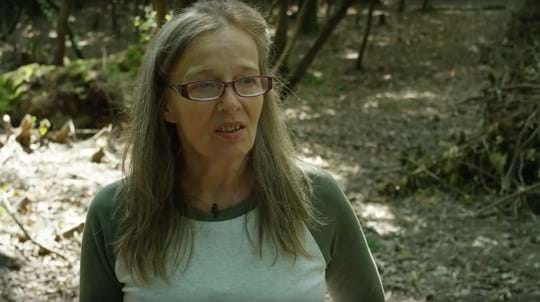
Video
00:02:40
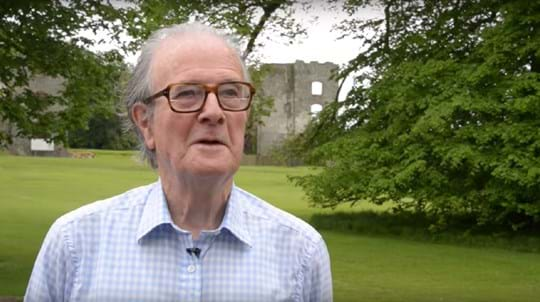
Video
00:05:20

Case study
PDF (650 KB)
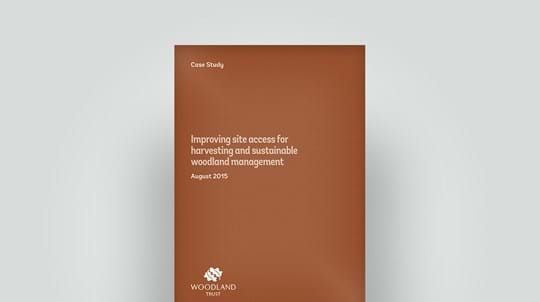
Case study
PDF (739 KB)
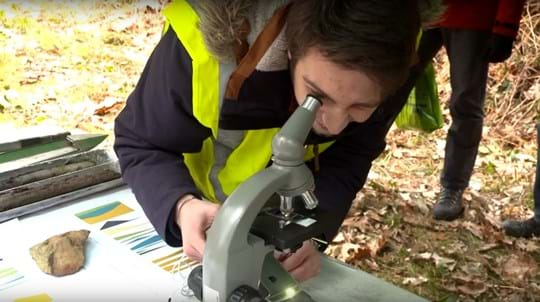
Video
00:06:35

Case study
PDF (756 KB)

Case study
PDF (347 KB)